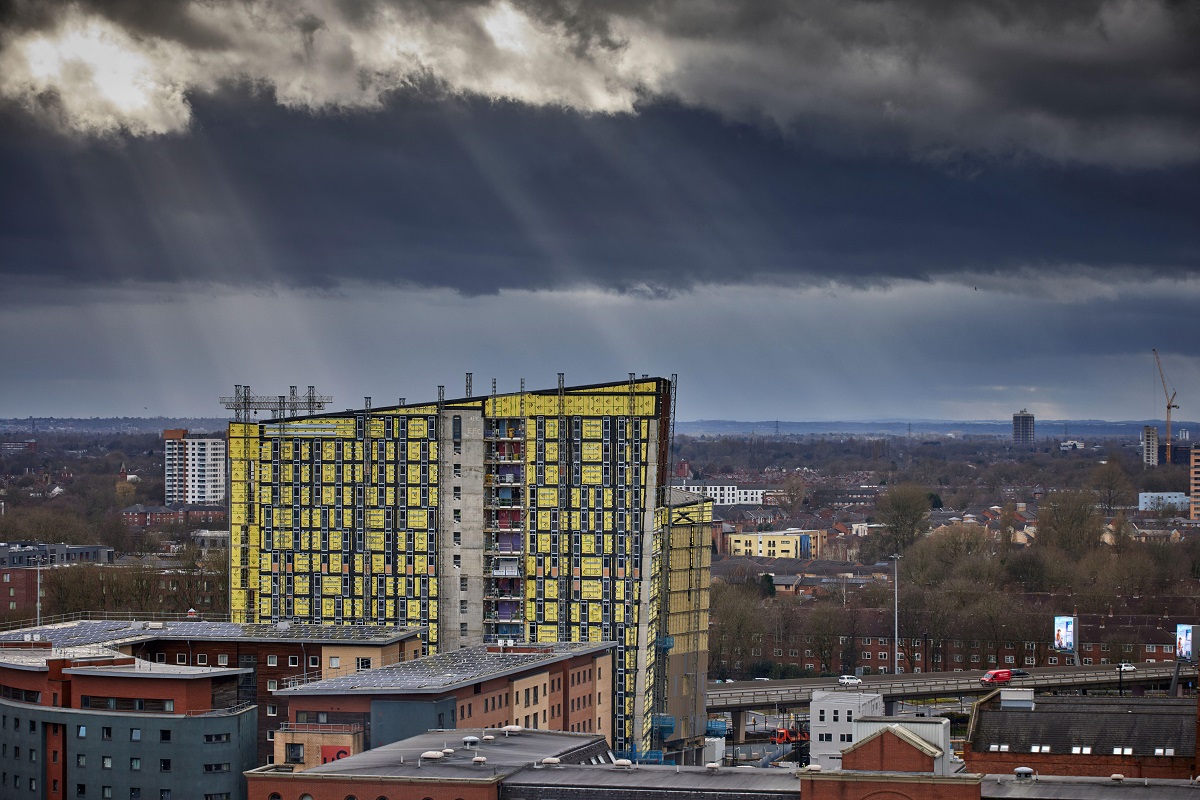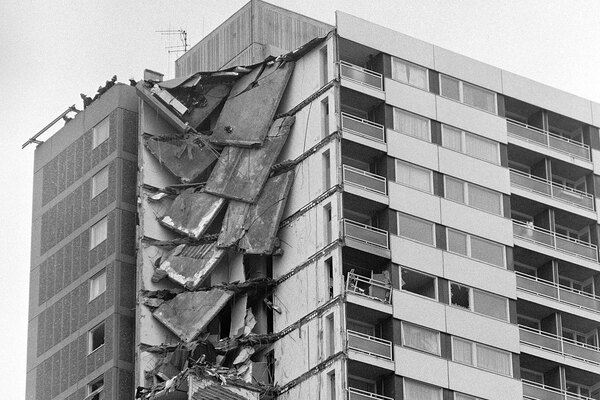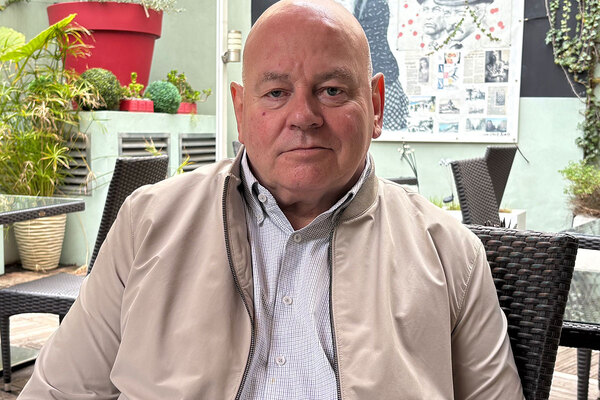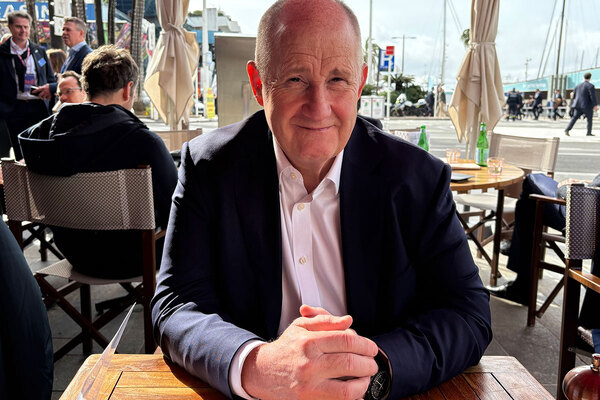‘It’s just the injustice that hit me’: ‘non-qualifying’ leaseholders and the latest battle on building safety
The building safety crisis continues to make life a misery for residents of blocks of flats around the country. The issue of “non-qualifying” leaseholders is the latest front in a six-year fight. Peter Apps speaks to the campaigners at the heart of it
“I can remember sitting on the train fairly soon after Grenfell, going through East Croydon [station], and looking at all these big blocks and just shaking, thinking about what loss those people had gone through, and thinking, ‘Thank goodness our buildings are not covered in all this plastic stuff’.”
So says Maggie Brodie, one of the founding members of the Non-Qualifying Leaseholders campaign group – an offshoot of the movement for leaseholder justice in what has been broadly termed the building safety crisis.
What Ms Brodie is expressing will probably be familiar to many of those who have found out they live in buildings with major safety issues since the Grenfell Tower fire in 2017: an assumption of security, that things would have been done right, rules would have been followed, checks would have been in place and homes on the market in an advanced economy in the 21st century would be free from significant life-safety defects.
But as we know by now, such confidence has proved misplaced.
“It’s just the injustice that hit me,” she says. “It was unfair. We’ve relied on legislation, we’ve relied on testing, we’ve relied on the government to manage the environment we lived in, and that system has failed.”
Ms Brodie owned a flat with her husband in an eight-storey block in east London. She says she “never felt unsafe in it” before Grenfell. But, in 2020, when EWS1 checks became a requirement to get a mortgage on a flat, it emerged that the cladding used in the render was combustible. The resident management company quoted £67,000 to fix it.
This might all seem like yesterday’s news. Hasn’t the government introduced legislation to prevent people like Ms Brodie from being hit by these bills?
Not quite. The rules are limited to qualifying leaseholders: those in blocks taller than 11m, with a lease starting before 14 February 2022 and who own no more than three properties where the flat in question is not their primary home.
But Ms Brodie and her husband owned two other residential properties, having invested in them for their retirement. As such, they were excluded from any protection.
“The fact that you own three properties doesn’t make it any easier to pay that amount of money,” she says. The only option for her and her husband would have been to sell one or both of their other properties.
This would have meant either evicting the tenants, or a sale to another landlord with the tenants remaining in the property. This is legally possible, but can be difficult to achieve – particularly in the current market.
“I’ve got two young families in there, both NHS workers, who have been with me for years,” she says.
If Ms Brodie and her husband do not pay, there is a further problem: remedial works cannot start until all the funds for the remediation are in place. And if the non-qualifying leaseholders don’t pay, it means the block will remain unfixed, and everyone in it will remain unable to sell and move on.
This has highlighted a big problem with the legislation. “We’re aware of blocks where they have got a large percentage of non-qualifying leaseholders: 30% or 40%, even one block where 70% are non-qualifying,” says Ms Brodie. There is no prospect of remediation works being carried out on these buildings under the current rules.
“The law seems to say if we were going to be asked to pay, you would be given 28 days, right? So you’d start to think, do you have to evict people now and start getting some money in the bank, in case you have to pay an unknown amount?” she says.
Suzy Spilling is the other co-founder of the campaign. Like many of her generation, she invested in property as a pension plan. Along with her husband, she “mortgaged up to the hilt” to buy two houses in Northamptonshire, and later a couple of apartments in City Lofts in Salford, Greater Manchester.
These two apartments got dragged into the building safety crisis. “When all this blew up, my kids kept saying, ‘Oh, the government won’t let that happen, they can’t let that happen to people, it would be so unjust’,” she says.
Like the faith that buildings had been built properly, this too proved unfounded. “It consumed me, honestly, it was just starting to put my life on hold,” she says. The bill for her remediation was around £30,000 per apartment, so £60,000 in total.
These costs will have changed: on the one hand, prices have risen, but on the other, some may now be met through new government funding pots which cover a wider range of defects. But there will certainly be substantial bills that are not covered by government funds.
Ms Brodie has been rescued recently by the developer liability scheme; the original developer of her block has signed the government contracts and will pay for the entire works.
But this is not the case for Ms Spilling. “It was City Lofts Group that actually built the original building, and they went into liquidation soon after,” she says.
Some of the original directors are still trading via a new company registered in Monaco, but this makes the chances of compensation extremely remote.
“If we were to get the letter through the letterbox tomorrow, we haven’t got the funds to actually start covering the costs of the remediation,” she says.
This would probably entail a move from her home in Bedfordshire to Salford to live in the affected flats, as they would have nowhere else to go. But this would mean moving away from ageing parents and grandchildren they care for.
“My biggest worry up until April was that I had cared pretty much full time for my mother. She was in tears at the thought of me having to leave her to move up to Manchester, which was atrocious. Unfortunately, we lost her in back in April, but we’ve still got my husband’s father, who’s been diagnosed with cancer.
“He’s in his eighties, as is my mother-in-law. So it would mean moving away from all our family to have to go and live in a flat in Salford in God knows what sort of condition.”
What is a non-qualifying leaseholder?
A non-qualifying leaseholder is anyone who has a lease which, on 14 February 2022:
- related to a property in a building below 11m in height
- was owned by someone with three or more properties and who did not live in the affected flat as their primary residence
The lease is non-qualifying in perpetuity, meaning those who purchase a lease from a non-qualifying leaseholder will also not qualify, regardless of their own circumstances.
Qualifying leaseholders are legally protected from paying anything to remove dangerous cladding, with caps placed on bills for other safety works relative to the value of the flat.
Non-qualifying leaseholders receive no such protection, but may have their bills reduced if the building qualifies for government funds, or a developer takes responsibility for fixing it.
This is the sort of real-life turmoil which so many have faced over the past six years because of the simple act of buying a flat which they had no means of knowing had serious safety defects.
And it is far from just small-time landlords who are affected.
Buildings below 11m are frequently deemed in need of remediation work, thanks in part to government guidance which sets no such height threshold on deeming a building’s walls in need of remediation.
But these blocks fall outside all legal protection, developer liability and government funding schemes, with ministers insisting expensive remediation is not usually necessary. This disconnect between the guidance and ministerial statements leaves residents trapped.
Another big – and surprising – issue, is that the lease is non-qualifying in perpetuity. So if Ms Spilling or Ms Brodie sold their flats, whoever purchased them would continue to be non-qualifying leaseholders, even if they were a first-time-buyer.
Inside Housing spoke to one such leaseholder, who purchased a flat in south London in March 2022.
She bought the property from a property acquisition company, which purchased it via a distressed sale at auction and quickly flipped it back onto the market at a profit of around £60,000.
But because this company was the owner as of the critical date of 14 February 2022, the new buyer, 29-year-old Catherine*, does not qualify for protection and is on the hook for a potential £47,000 remediation bill.
“Unless things change, I will just have to sell the property at a massive loss, move back in with my parents and just start back from scratch, basically,” she says. Even before the remediation, her service charge hit £3,200 per year, up from £2,300 when she first moved in, putting her in debt.
These stories are not unique. A closed Facebook group run by Ms Brodie and Ms Spilling has more than 700 members. “Quite a lot are people in their 70s and 80s, who really aren’t in a place to deal with this stuff,” says Ms Spilling. “But there are quite a few younger people as well. We had one young chap who was wondering if he should call off his wedding.
“There was a young guy in an under-11m block who had terminal cancer and was trying to sell so he could move back in with his parents so they could take care of him.”
“We’re trying to put the message across to government about what the consequences are of having non-qualifying status,” says Ms Brodie. “But they don’t seem to care. We just get sent letters about everything they have done and how well it’s working, but that just isn’t the reality for people in our situation.”
A Department for Levelling Up, Housing and Communities spokesperson said: “The Building Safety Act introduced far-reaching, unprecedented protections for leaseholders. The priority is to protect innocent leaseholders living in their own home from paying unfair costs to fix problems they did not cause.
“There are significant financial protections for leaseholders who own multiple properties: no leaseholder will ever pay to remove dangerous cladding from a building over 11m tall. Leaseholders in buildings where developers have signed the developer remediation contract are also protected from other, non-cladding costs, and we have created new legal tools to ensure building owners can make those responsible for dangerous products pay to have them removed.”
Sign up for our fire safety newsletter
Already have an account? Click here to manage your newsletters













